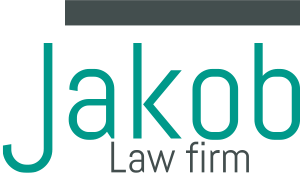Important Legal Requirements
Market Access of MedTech Products in the EU
For companies looking to import or distribute medical technology (MedTech) products in the European Union (EU), it is crucial to meet the relevant regulatory requirements. Failure to comply with these regulations can not only hinder market access but also lead to significant liability risks and costs. This article provides an overview of the key legal requirements and how to create a legally secure market strategy.
1. Basic Regulatory Requirements
The primary regulations governing the market access of MedTech products in the EU are EU Regulation 2017/745 on Medical Devices (MDR) and EU Regulation 2017/746 on In-vitro Diagnostic Devices (IVDR). These regulations ensure that all products meet safety and performance requirements before they can be marketed in the European market.
A crucial step for market access is the conformity assessment. This is typically carried out by the manufacturer or in cooperation with a so-called “Notified Body,” which is required for higher-classified medical devices. During the conformity assessment, companies must demonstrate that their products meet the essential requirements of the respective regulation, particularly in terms of safety, usability, and risk management.
2. Technical Documentation and Risk Management
The technical documentation is a central component of the conformity assessment process. It includes all relevant information about the product, such as the product description, clinical evaluation, risk management, and quality assurance documents. This documentation must be accessible to market surveillance authorities at any time and is regularly reviewed during audits.
For successful market access, it is also necessary to implement a risk management system. This system must identify, assess, and establish appropriate measures to minimize potential risks related to the product. This ensures that all products sold within the EU are safe and effective.
3. CE Marking and Declaration of Conformity
After a successful conformity assessment, the product must bear the CE marking, confirming that it meets all legal requirements. This marking is a prerequisite for the sale of medical devices within the EU’s internal market. Additionally, a Declaration of Conformity must be created, declaring that the product complies with the regulations and standards.
4. Market Surveillance and Post-Market Surveillance (PMS)
Once a medical device is available on the market, comprehensive market surveillance and post-market surveillance (PMS) obligations continue to apply. These requirements ensure that the product continues to meet safety standards after being placed on the market. Therefore, it is essential to establish a market surveillance system that documents complaints, recalls, and other relevant incidents and responds appropriately.
5. The Need for an EU Authorized Representative
For manufacturers outside the EU, it is necessary to appoint an EU Authorized Representative, who acts as the point of contact for the relevant EU authorities. This representative also assumes responsibility for ensuring compliance with regulatory requirements in the European market. This is an indispensable step to ensure that all EU legal requirements are met.
6. Important Standards and Certifications
In addition to legal requirements, numerous European standards must be adhered to, confirming the product's compliance with the required safety and quality standards. These include, for example:
- EN ISO 13485 – Quality management systems for medical devices
- EN ISO 14971 – Risk management for medical devices
- EN IEC 62366 – Usability of medical devices
Compliance with these standards leads to a presumption of conformity, meaning that meeting these standards is considered sufficient proof of compliance with legal requirements.
7. The Necessity of EU Registration (EUDAMED)
Another essential step for market access is the registration of medical devices in EUDAMED, the European database for medical devices. EUDAMED registration is mandatory for manufacturers, EU authorized representatives, and importers before placing a product on the market.
Key steps for EUDAMED registration include obtaining a UDI (Unique Device Identification) code, which must be applied to the product. Furthermore, manufacturers must ensure they obtain a Single Registration Number (SRN) from the EUDAMED system, which requires prior registration.
EUDAMED plays a crucial role in enhancing transparency and ensuring market surveillance for medical devices by allowing better traceability in case of safety issues or recalls. Failure to register with EUDAMED can prevent market entry and expose the company to legal risks.
Conclusion
Market access for MedTech products in the EU comes with numerous regulatory challenges. To ensure that your product receives the necessary approvals and can be legally marketed within the European market, all relevant requirements must be meticulously fulfilled. A comprehensive understanding of conformity assessment, technical documentation, risk management, and market surveillance is essential. We are happy to support you in implementing these requirements for your company to minimize legal risks and ensure success in the European market.
Your contact person

Lawyer Inés Jakob
& Certified Dangerous Goods Safety Adviser
Please send us a short email with your request to:
Or arrange immediately a free, non-binding introductory meeting using the following link:
Please note that, as an international business law firm, we do not take on private client matters.
We welcome your enquiry and are happy to assist!



